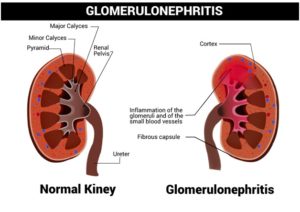What is Down syndrome?
- Down Syndrome (DS) is a genetic disorder due to chromosomal number alteration. The other name of this disease is Trisomy 21. Here, an additional copy of chromosome number 21 is present.
Incidence
- The worldwide incidence of Down Syndrome is 1.5 per 1000 live birth.
- Increased maternal and paternal age plays a pivotal role in Down syndrome.
- The incidence of Down syndrome increase with the progression of maternal age.
- The probability increases from less than 0.1% in 20-year-old mothers to 3% in 45-year-old mothers.
Features
- Face:
- Upslanting palpebral fissures
- Epicanthic folds
- Brushfield spots in the iris
- Tongue protrusion
- Low set small ears
- Flat or round face
- Flat occiput
- Single palmar crease
- Marked ‘sandal gap’ between the big toe and first toe
- Decreased muscle tone
- Short stature
Complications
- Cardiac
- Ventricular septal defect (the most common cardiac problem)
- Cushion defect of the endocardium
- Tetralogy of Fallot (TOF)
- Ostium secundum atrial septal defect (ASD)
- Patent ductus arteriosus (PDA)
- Neurological
- Learning difficulty
- Alzheimer’s disease
- Others
- Acute lymphoblastic leukemia
- Recurrent respiratory infection
- Hypothyroidism
- Male infertility
- Female subfertility
- Atlantoaxial instability
Diagnosis
- Screening
- Blood test – pregnancy-associated plasma protein-A (PAPP-A)
- Nuchal translucency test
- Diagnostic
- Chorionic villus sampling
- Amniocentesis
Treatment
- No definitive treatment has been yet established.
- Symptomatic and interventional treatments are given for associated critical conditions. Usually, the multi-disciplinary medical team is needed.
- Support groups.
Life expectancy
- Around 20% of patients die within the 1st year.
- 45% may survive up to 60 years.



